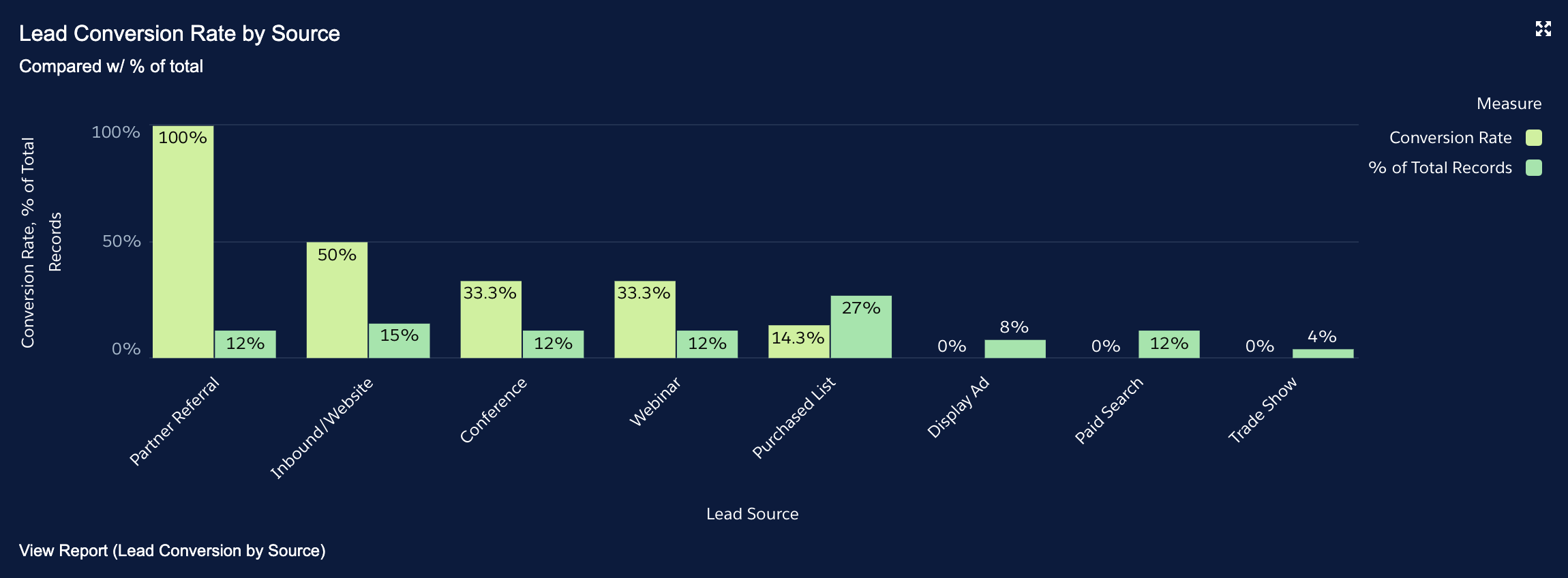Part 1 of a series about marketing attribution & analytics
Introduction
A pattern we see across a wide variety of organizations is a focus on collecting data without the structure in place to turn the data into useful information. At best this hoarding behavior is putting something into storage for potential review, cleanup, and analysis at a future unspecified date; at worst it alienates customers and frustrates staff.
“Source” is a common example where we see this play out and is also a great foundation for thinking about engagement metrics when managed correctly. By thinking through the questions we want this data to answer and being able to specifically articulate them, we can set up useful reports that provide actual insight.
First Touch vs Opportunity Source
There are two common places where source is used in a CRM; to track the source of an opportunity/financial commitment and the person(s) associated with the opportunity. These are not necessarily the same thing!
The source of the person is generally both simpler to articulate and easier to track. It’s what first brought them into contact with your organization—a single point of engagement, which can also be referred to as First Touch. It’s also important to note that this value shouldn’t change over time. One common mistake marketers make is overwriting that person’s initial value on subsequent touchpoints.
The source of an opportunity may be clear—a purchase at a specific event, a response to a specific invitation or email—but it can be much more challenging to nail down if there are many touch points over time, or multiple people involved. Which ‘source’ do you pick in that scenario?
 .
. 
Conversion Rates
For many organizations that we work with, a single Lead Source doesn’t provide the full picture because it’s a snapshot of what happened at one specific historical moment. It fails to capture the story of engagement over time. That doesn’t mean it’s not valuable, however—just that we need to be more specific in how we approach using it.
Using Lead Source as the first touch metric for “acquiring” new records lets us reframe the question(s) we want to ask in a way that we can answer with a regular Salesforce report:
“What do we know about future actions people take based on how they first interact with our organization?”
To put it another way, we can’t necessarily use Lead Source to examine engagement in a holistic way, but we can use it to look at different marketing channels and determine the rates at which people who first engage via that channel are likely to take additional action. If we see that one source is performing notably better or worse than another, that can inform our marketing efforts or expectations.
Let’s take a look at a sample dashboard chart that compares the likelihood of a lead to convert (# converted Leads / # of Leads), grouped by Lead Source. It also displays a second metric, the % of total Leads by source. A high conversion rate may be less valuable if it’s a small percentage of the total.

Sample conversion chart displaying the rate at which Leads convert into Contacts, segmented by Lead Source
Some information this chart provides:
- Referrals form only 12% of all leads, but every referral converted—hopefully this is not a surprise!
- Our next best-converting source is inbound website traffic
- Leads acquired via a purchased list form the largest segment of the database, but don’t convert particularly well
- Paid display ads and search comprise 20% of all leads, but NONE of those leads converted. I.e., paid digital isn’t performing well at all.
You aren’t limited to thinking about conversion just in terms of Leads becoming Contacts—all you need is a defined goal and you can work backward from there to ask how likely someone from a given source is to hit that goal. Converting from a Lead to a Contact might be the first step; you could also look at the % of people from a given Lead Source who are eventually connected to a closed/won Opportunity. To phrase this as a question:
How often do people who click on a Google Ad and sign up for our newsletter go on to donate? Is it worth our time and effort to run ads?
You might engage with that person in a variety of ways before they make a financial commitment—emails sent/opened, attended an event, volunteered—but you can trace the origin of the donor (person) back to a Google Ads grant. The volume of new leads from an ad isn’t a particularly helpful metric; how those people go on to engage with your organization is.
Next Steps
We’ve covered the basics of how we can take a data point with known limitations (single, static “Lead Source”) and get something useful out of it by asking the right question of the data we have. Future posts dig into some deeper questions and considerations, including:
- Aligning “Lead Source” with Google Analytics “utm_source” vs other categories such as marketing channels or medium
- Layers of granularity: Lead Source as a picklist vs the specific campaign
- Reconciling “How did you hear about us?” replies with the actual first touchpoint you’ve identified
- Person Lead Source vs Account Source
- Multi-touch attribution; taking into consideration a variety of engagement touchpoints tracking progress towards a goal
Read Part 2: What Exactly is ‘Source,’ Anyway?





